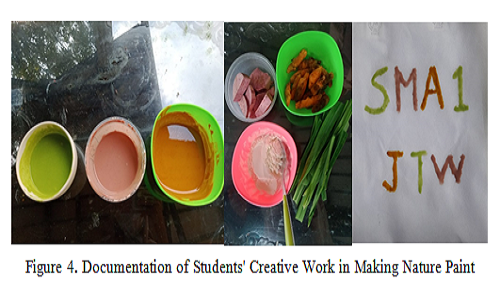
Colloidal Learning Design using Radec Model with Stem Approach Based Google Classroom to Develop Student Creativity
Abstract
This study aimed to examine the feasibility of a RADEC model of colloidal learning design using the STEM approach based on Google classroom to increase student creativity. The method used was descriptive research. This study involved two experts, one teacher, and three high school students in Class XI. Data was collected through an internal feasibility test, the suitability of the creativity sub-indicator with learning activities, and an external feasibility test carried out with a limited test to 3 high school students. The results showed that the learning design uses the RADEC model with a STEM approach based on Google Classroom that deserved to be used to increase student creativity. From this research it is concluded that this learning design can be used to increase student creativity.
Keywords
Full Text:
PDFReferences
Afrianti, W. (2018). Penerapan Google Classroom Dalam Pembelajaran Akuntansi. (Skripsi). Yogyakarta : Program Studi Akuntansi Universitas Islam Indonesia.
Amabile, T. (2012). Componential theory of creativity. England: Harvard Business School.
Arikunto, Suharsimi. (2006). Dasar-dasar Evaluasi Pendidikan Edisi Revisi. Jakarta: Bumi Aksara.
Becker, K. & Park, K. (2011). Effect of Integrative Approaches Among Science, Technology, Science, Engineering and Mathematics (STEM) Subject and Students Learning: A preliminary Meta-Analysis. Journal of STEM Education, 12(5), hlm. 23-37.
Bybee, R. (2013). The case for STEM education: Challenges and opportunity. Arlington, VI: National Science Teachers Association (NSTA) Press.
Kementerian Pendidikan dan Kebudayaan. (2013). Lampiran IV Permendikbud No. 81a tentang Implementasi Kurikulum. Jakarta: Kemendikbud
Law, N., Pelgrum W., & Plomp, T. (2008). Pedagogy and ICT Use in Schools Around The World : Finding From The IEA SITES 2006 Study. Hong Kong : CERC – The University of Hong Kong.
Munandar, U. (1992). Mengembangkan Bakat dan Kreativitas Anak Sekolah. Jakarta: PT Gramedia.
National STEM Education Center. (2014). STEM education network manual. Bangkok: The Institute for the Promotion of Teaching Science and Technology
Noor, J (2016). Metodologi Penelitian: Skripsi, Tesis, Disertasi & Karya Ilmiah. Jakarta: Prenada Media.
Quang, L., Le, H., Vu, C., Nguyen, N., Nguyen, A., & Vu, N. (2015). Integrated science, technology, engineering and mathematics (STEM) education through active experience of designing technical toys in Vietnamese schools. British Journal of Education, Society & Behavioural Science, 11(2), 1-12.
Riyana, S. (2015). The Implementation Of Creativity In The Extracurricular Aeromodelling. Surakarta : UMN.
Riduwan. (2015). Dasar-Dasar Statistika. Bandung: Alfabeta.
Shulman, L. (1987). Knowledge and teaching: Foundations of the new reform. Harvard educational review, 57(1), 1-23.
Sopandi, W. (2019). Sosialisasi dan Workshop Implementasi Model Pembelajaran RADEC Bagi Guru-Guru Pendidikan Dasar dan Menengah [Dissemination and Implementation Workshop of RADEC Learning Models for Primary and Secondary Education Teachers]. PEDAGOGIA: Jurnal Pendidikan, 8(1), 19-34.
Wahyu, W. (2015). “Peningkatan Efikasi Diri Peserta Didik dalam Pembelajaran Kimia melalui Teknik Jigsaw II”. Prosiding Simposium Nasional Inovasi dan Pembelajaran Sains 2015 (SNIPS 2015) 8&9 Juni 2015, hal. 577-580.
Wiersma, W., & Jurs, S. (2009). Research methods in education: An introduction. Boston, MA: Pearson.
DOI: http://dx.doi.org/10.31258/jes.4.4.p.758-765
Refbacks
- There are currently no refbacks.
Copyright (c) 2020 Aif Saiful Maruf, Wawan Wahyu, Wahyu Sopandi

This work is licensed under a Creative Commons Attribution 4.0 International License.
Publisher: FKIP Universitas Riau












